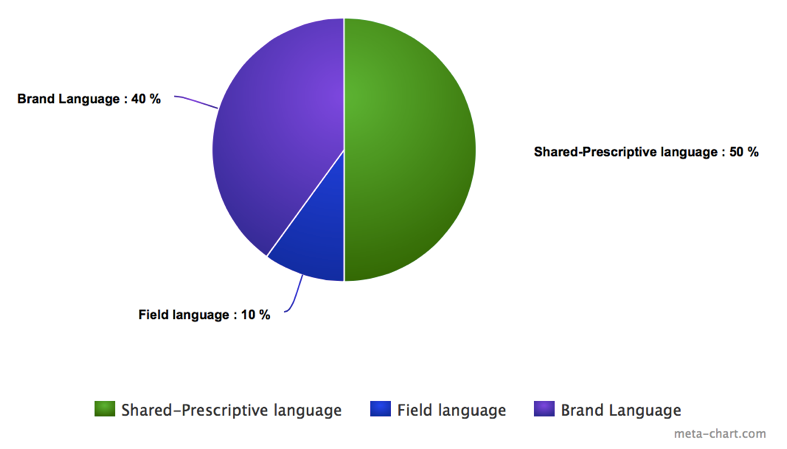Structural linguists became aware of the magical self-sufficiency of language a long time ago.
 Insights on Languages of Brands with broad applicability for any marketer, communications professional and business leader - from our Partner Markus Kramer. Views are subjective and our own. September 18th 2017. © Brand Affairs AG.
Insights on Languages of Brands with broad applicability for any marketer, communications professional and business leader - from our Partner Markus Kramer. Views are subjective and our own. September 18th 2017. © Brand Affairs AG.
The order of language is hidden in its linguistic structure, not in the content. What the English philosopher Roger Bacon said back in the 13th Century is as relevant today as it was then: “the conquest of learning is achieved through the knowledge of languages.”
Whether consciously or unconsciously, structural linguists became aware of the magical self-sufficiency of language a long time ago. They saw it as a technology that can be weaved into the fabric of daily life to the extent that we may even forget its existence. The place of language in brand management has been explored and observed by many insiders from various angles, all of which point to the fact that language is of utmost importance in 21st century brand management.
“The order of reality is hidden in the order of language.”

A brand’s language reflects its culture. A cultured brand, therefore, is one that celebrates language. Brand ambassadors of such a brand usually communicate in an articulate manner both externally and internally. They focus on two important factors: (1) the context and (2) the addressee (for personalization). These two factors do not alter the overall structure of the brand’s lingua franca. The more cultured a brand, the less mainstream its vocabulary, and the more carefully the words are selected to dissipate the word-cloud. There is a display of skill in distinguishing between buzzwords and keywords – substance over empty jargon.
“The more cultured a brand, the less obvious its word-cloud is.”
If the language of the brand is not aligned with a company’s values, virtues, vision, mission, ideology and ultimately its overarching Purpose, it will not resonate with maximum effect no matter how clearly and beautifully written. Aligning a brand’s lingua franca with its positioning and making it relevant to the prescriptive, shared language currently used in society and the respective industry is the way to go.

One of the key advantages of language is its ability to extend intelligence. In his studies the media effects analyst Dr. Marshall McLuhan found that “language does to intelligence what the wheels do to the feet.” However, it is necessary to be aware of the limitation of language, too. The territory of intelligent consciousness is larger than the territory of language, even though language is still the key instrument in reaching that intelligent consciousness. Therefore, it is best to keep in mind that, on one hand, language itself may not be able to reach the height of client consciousness. On the other hand, a holistic brand continuously fed with language to create concentrated representation, is able to do so.
“Language does to intelligence what the wheels do to the feet.”
In an interview about investing, information overload and decision-making, Prof. Dan Ariely, a behavioral economist from Duke University, stated: “language allows us to create tremendous advantages.”1 It is one of the powerful technologies that led to the human species’ dominance on our planet. From the standpoint of brand management, it is one of the most useful tools to distinguish a brand and establish top-of mind awareness among consumers. For example, Martin Lindstrom found that 59% of consumers consider the word “masculine” and “Gillette” as one and the same. Over 80% of consumers around the world directly associate “dreams,” “creativity”, “fantasy,” “smiles,” “magic,” and “generation” with Disney.2
“Simplification is the friend while oversimplification is the enemy.”
In our age of increasing data clutter, language can be a key tool in solving communication problems. As the cognitive scientist, Steven Pinker, writes: “Governments and corporations have found that small improvements in clarity can prevent vast amounts of error, frustration, and waste...”3 Simplification is the friend while oversimplification is the enemy. A language needs to enlighten and clarify, not confuse or create additional clutter. Take BT as an example – they saved about $620,000 by simplifying the language of a call center script and cutting out the legalese. BMW’s language consistency was so effective in dealing with customers that it increased brand loyalty.4
Many would agree that one article couldn’t do justice to the topic of brand language. But here is a useful checklist of questions to guide you in creating and managing a brand’s lingua franca: